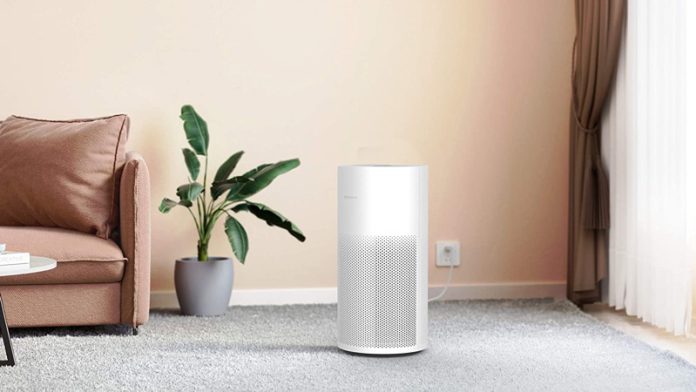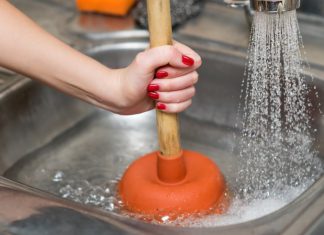Indoor air quality at home is more important now than ever before. According to the CDC, Americans spend more than 90 percent of their time indoors. And with the work-from-home and home-schooling, and remote-learning revolutions in full swing, we spend even more of that indoor time in our homes.
But what happens when your home is making you sick?
All sorts of contaminants can grow or build up in your home. We’re talking about everything from dust, allergen, and dust mites to bacteria, volatile organic compounds (VOCs), and toxic mold.
It sounds scary, but it doesn’t have to be that way!
We’ll help you spot the signs of poor indoor air quality at home. Then, we’ll discuss what causes these problems. And, of course, how to get rid of them!
This problem can occur in any home. But, if you have a ductless mini split for heating and cooling, you’ll especially want to read this to the end.
Four Signs Of Poor Indoor Air Quality At Home
How can you tell if you have poor indoor air quality at home? Ask yourself if you notice these problems at home. If you experience some or all of them, your air quality is most likely to blame.
Seasonal Allergy Symptoms
Do your allergies get worse when you’re home? More so than at work or other people’s houses? That’s a sign of excess dust and pollen in your home. It’s most common in the summer because your windows are closed with the AC on. You’re staying cool, but there’s no way for air to circulate to flush those contaminants out of the house. Instead, they build up and cause problems.
Asthma Attacks And Flare-Ups
Excess dust or pollen trigger asthma attacks at any time of the year. And, high humidity makes things worse: The “stuffy” air makes it harder to breathe. And, those tiny allergens stick to water droplets in the air. They’re “floating” around for you to breathe them in.
Bad Smells
Bad smells often indicate bad air quality. It’s anything from cooking smells to bathroom odors or any sort of chemical or gas smells. Those scents are indications of toxic or otherwise unhealthy particles in the air you’re breathing.
Most of these fall under VOCs, which is short for Volatile Organic Compounds. In a nutshell, these are chemicals emitted as gasses that we end up breathing in.
Mold Problems
Mold spores are to blame for everything from skin rashes, trouble breathing, and even sometimes nausea, fatigue, and difficulty concentrating. If there’s mold in your home, there are mold spores in the air, and they can make you very sick.
Hot And Cold Spots In Your Home
Hot and cold spots are important, if indirect, signs of air quality problems. It means your HVAC system isn’t doing a good job of circulating the air.
In the winter, heat isn’t reaching every room, resulting in cold spots. The AC can’t cool your entire house in the summer, leading to warm areas.
But you also need that circulation to get rid of dust and allergens. When the air gets to the furnace, it passes through a filter that traps dust and dirt, so it comes out clean. Without that process, the air stays dirty. And, those contaminants will build up in the house instead of circulating.
How To Improve Your Indoor Air Quality
Now that we’ve touched on what causes IAQ problems and how to spot their presence, let’s talk about getting rid of them!
Get Fresh Air
First, open your windows from time to time, even in the summer and winter. Of course, you need them closed when the heat or AC is running. But, getting some fresh air every few days helps eliminate all kinds of allergens and contaminants that have been building up inside for weeks or even months.
Make A Cleaning Routine
A robust weekly cleaning routine eliminates many contaminants that lead to unhealthy air in your home. Cleaning thoroughly, vacuuming, wiping surfaces with a damp cloth, and washing your linens in hot water all make a huge difference.
Change Your HVAC Filter
We talked briefly about the air filter in our heating and cooling system. Furnaces, central air, and mini splits all use them to trap dust and tiny particles. But, you need to change them out, so they don’t get clogged.
All that buildup makes its way back into the air when that happens. To avoid this, change that filter every month. For mini splits with reusable filters, clean them out every month.
Control Humidity
Your air conditioner doubles as a humidifier, significantly reducing humidity in the summer. You can also buy separate humidifiers if that’s not enough for your home. These range from portable plug-in models that treat a single room to whole-house appliances that attach directly to your furnace and central air.
Use An Air Purifier
Different air purifiers use strong filters, UV or UVC lights, and even electricity to trap, neutralize, and eradicate bacteria, mold spores, viruses, and many other organic and non-organic contaminants. As with humidifiers, you can buy inexpensive models that treat a single room. Or, invest in a system that works with your HVAC system to treat your entire house.
Clean Your Heating & Cooling System
Dirt, dust, and even mold can grow in your HVAC system. And the problem is most common with ductless mini splits.
The insides of the air handlers are dark, warm, and moist — a perfect breeding ground for microbial growth. Plus, they are tough to clean because of all the tiny parts jammed in there.
As a result, you’ll get loads of mold growing in there. Then, the spores — along with dust, dirt, pollen, and other pollutants — end up in the air you breathe when the system blows it back out into the room.
If you’ve never had a professional mini split deep cleaning, you owe it to yourself to have an HVAC tech — or better yet, a company specializing in this service — look inside and show you what they find. The good news is that a fast, easy clean can get rid of the problem.
There’s a lot that goes into your indoor air quality, but it can be easier than you think to make the air you breathe at home much healthier! Start with these easy tips and feel the difference for yourself.















